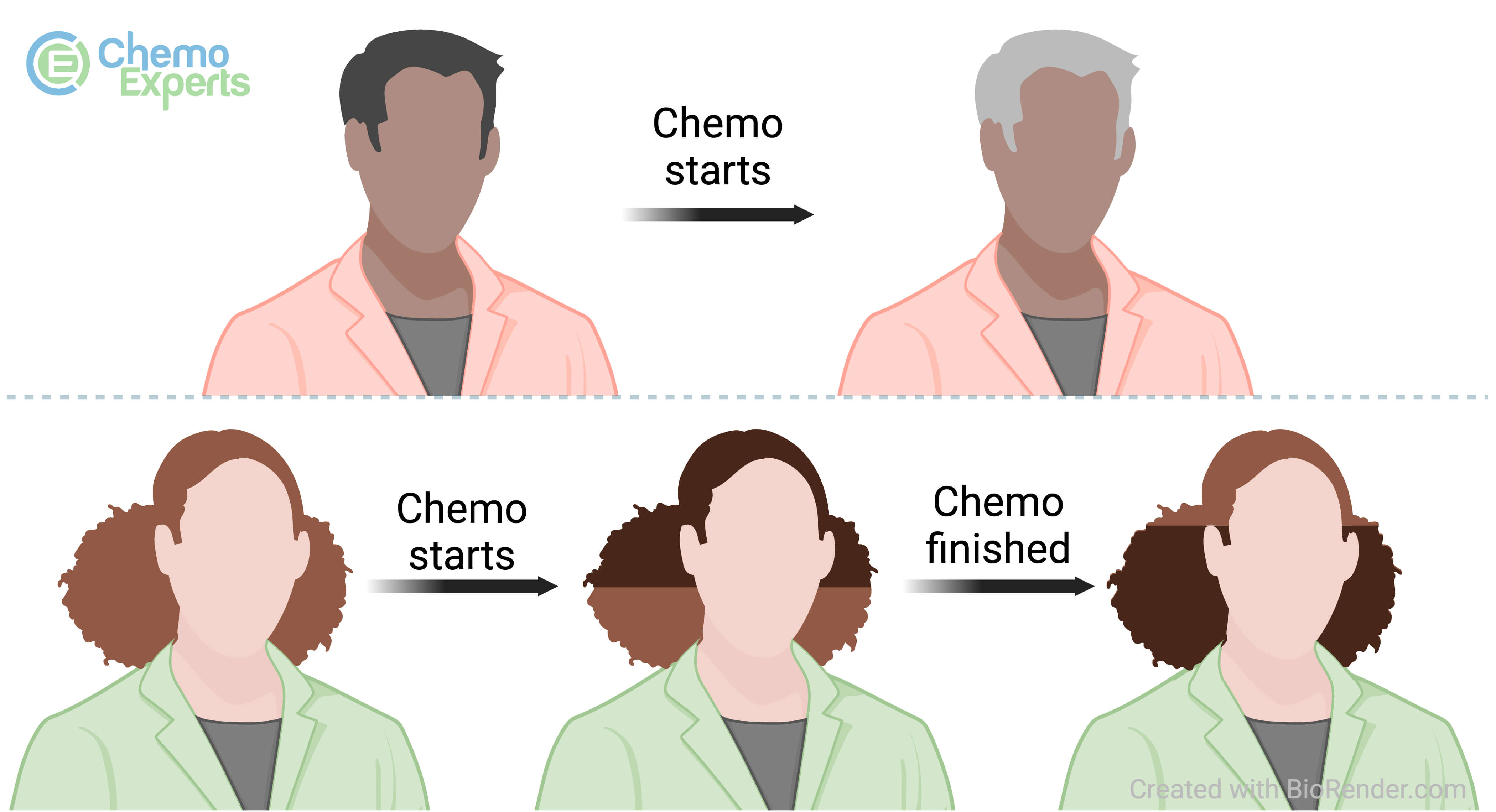Side Effect: Changes in Hair Color
What is a Change in Hair Color?
Hair color can change in patients with cancer due to the cancer treatment that is being given. These treatments can damage or destroy hair follicles, which can change the color of the hair. Hair on the scalp, eye lashes, and eyebrows can be affected. Hair color can become darker (hyperpigmentation) or lighter (hypopigmentation) depending upon the treatment given.
What does a Change in Hair Color due to Cancer Treatment look like?
Because hair is slow growing, the change is gradual and takes place over several months. However, changes in hair color may depend upon when you are taking chemotherapy in cycles (where there are periods of time when no chemotherapy is taken), or if you are taking it continuously.
Changes in Hair Color

Click to enlarge
- taking chemotherapy consistently (such as a daily pill), may lead to a consistent change in hair color
- taking chemotherapy in cycles may cause the hair to change to a different color, but change back to normal once the chemotherapy is no longer taken
Who develops a Change in Hair Color from Cancer Treatment?
Patients with cancer who receive chemotherapy treatment may develop hair color changes. Importantly, the extent of hair color changes can depend on the type of treatment, dose, and the patient’s sensitivity to the drug. Not every patient who receives chemotherapy has hair color changes.
Examples of cancer treatment that have the potential to change hair color include:
- Targeted therapies (cabozantinib, pazopanib, sorafenib, sunitinib, imatinib, cetuximab, erlotinib, gefitinib)
- Immunotherapy (pembrolizumab, nivolumab, ipilimumab)
- Alkylating agents (busulfan, cyclophosphamide, etoposide)
- Doxorubicin
- Daunorubicin
- Irinotecan
- Topotecan
- Antimicrotubule agents (paclitaxel, docetaxel, vincristine, vinblastine)
- Radiation
- Endocrine therapy (leuprolide, tamoxifen, raloxifene, anastrozole, exemestane, letrozole, octreotide)
How long do changes in hair color from chemotherapy last?
- Taking chemotherapy consistently (such as a daily pill), may lead to a consistent change in hair color
- Taking chemotherapy in cycles may cause the hair to change to a different color, but change back to normal once the chemotherapy is no longer taken. This may take several months or even as long as a year for some people.
How to prevent Changes in Hair Color
It is difficult to prevent changes in hair color during cancer treatment. Hair color typically returns to normal after cancer treatment is complete, but this process can take several months to years depending on the patient and the type of treatment that was given.
How to treat Changes in Hair Color
Patients can consider using hair dyes or hairpieces to temporarily mask any color changes if they are undesirable. It is recommended to speak to a specialist that focuses on hair and scalp care (trichologist) for specialized hair care advice.
Created: March 8, 2024
Updated: March 8, 2024

